
It was scorchingly hot when I started out on the Haute Route across the Pyrenees (see here) but it took me time to appreciate the impact this was having on the vegetation in the mountains. Almost all the flowers had gone, whether the land was grazed or not.
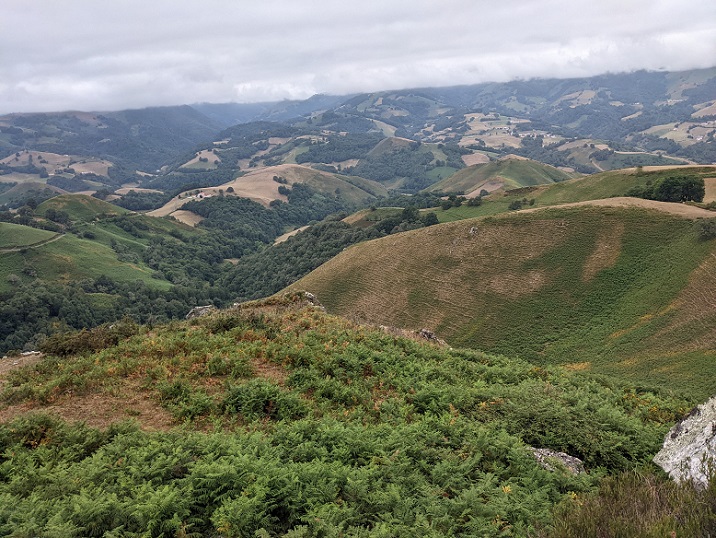
Having not been to the Basque country before, I did not know what to expect nor what was normal in high summer. The impact of heat was partially concealed by the extent of the tree cover and the large areas of bracken and gorse which retain their chlorophyll better than other plants. From a distance the land appeared greener than it was.
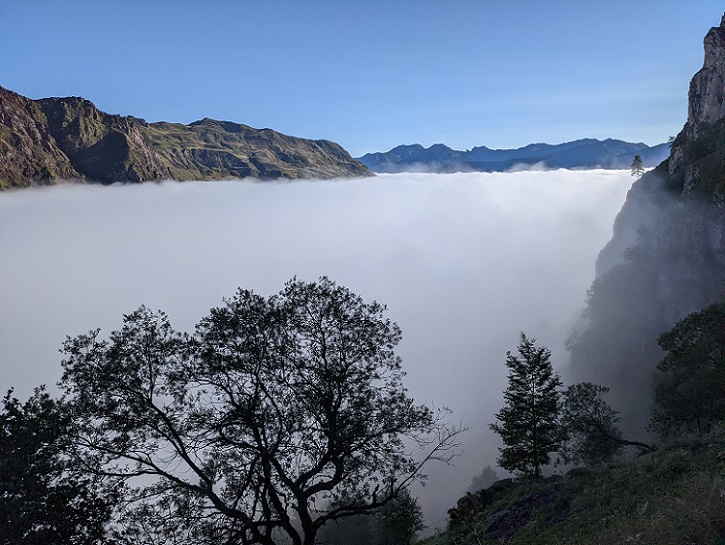
Moreover, because of how the Pyrenees make their own weather, the north facing slopes are often covered in cloud which offers protection from the sun and some moisture to boot, even if it doesn’t actually rain. I spent much of the first few days of my journey bathed in cloud, an experience akin to travelling through a steam room in a sauna, while a week later in the high Pyrenees there were frequently temperature inversions on the French side.

The relative humidity combined with the evergreen spruce and pine, which are the dominant trees at higher altitudes, made parts of the High Pyrenees look relatively green. But, unlike my two previous visits, there were still almost no flowers while those I did see, like scabious and St John’s Wort are species that in Scotland normally flower in late summer.
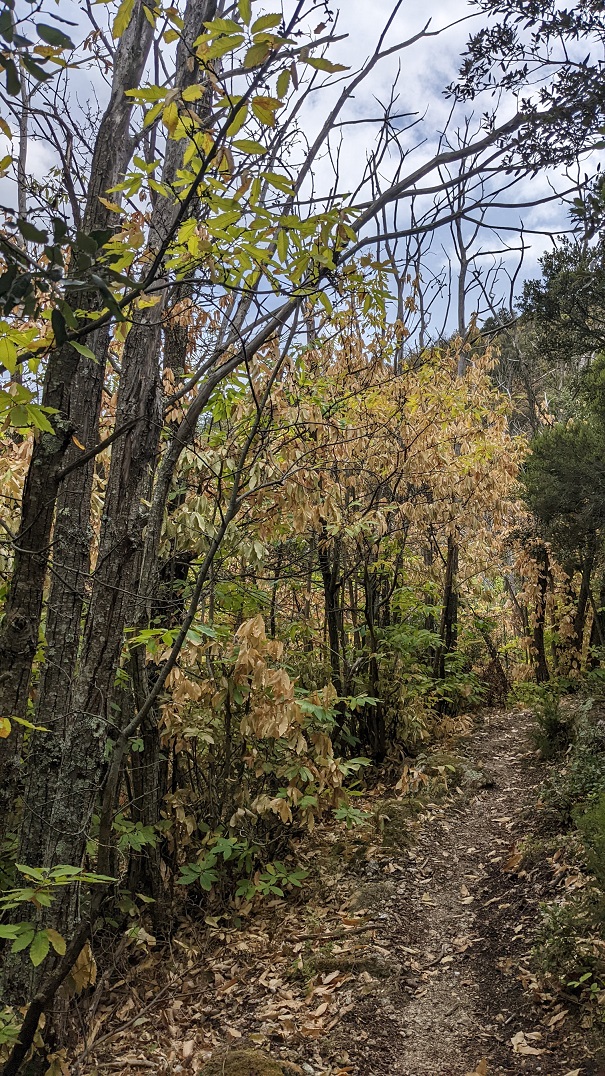
But it took until I reached the eastern Pyrenees, where there were extensive groves of horse chestnut that had almost entirely shed their leaves leaving their bare branches silhouetted against the sky, to realise that what I was witnessing was not just early autumn but ecological catastrophe.

And it wasn’t just sweet chestnut. In the beech forests the trees were shedding their leaves while still green, something I cannot recall ever seeing before:

Beech are well known for normally retaining their dead leaves over the winter but shedding their leaves while green reduces the amount of water they need and improves their chances of surviving serious drought.
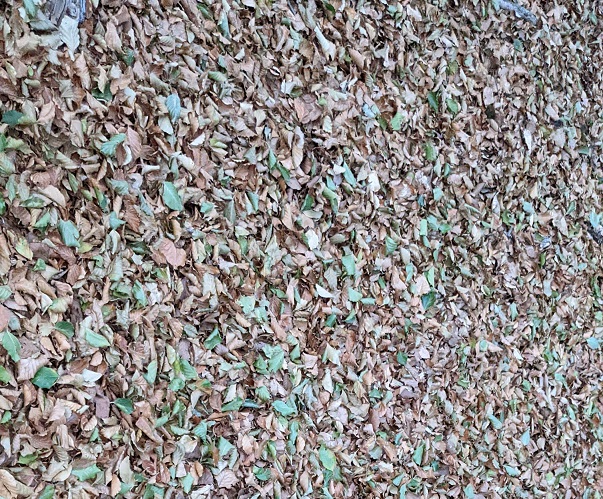
In places, multiple species and whole areas of forest appeared to be dying:

While the French Alps looked greener, there were still almost no mountain flowers, even in the Vanoise which are renowned for them:
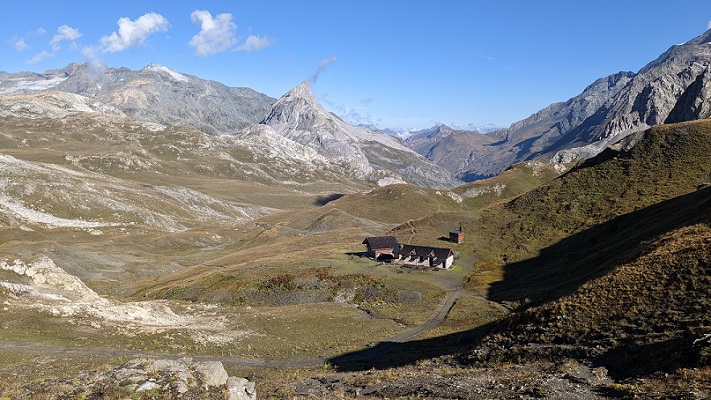
Again, I wondered about the extent to which this was due to the timing of my visit – it was late August before I reached the Vanoise? But in a refuge there I heard a Frenchman, who I had earlier seen wandering over a hillside looking for plants, explaining the unpredented impacts the drought had had on flowering plants and it all came together. What I had been witnessing was beyond the normal annual variations in heat and precipitation but a sign of impending catastrophe.

And then I read the front page of a local paper in Modane in the Maurienne valley which, if my memory is right is home to more plant species than the whole of the UK, where foresters were warning that certain species of trees are likely to disappear entirely from the Alps because of lack of water. And for every mountain plant species that disappears, there will be knock on impacts for all the species that are associated with them, from the insects that feed off the flowers to the cows that produce the famous Beaufort cheese. Instead of the Alps and Pyrenees serving as crucial reservoirs for water and biodiversity, it now seems possible they could turn into arid deserts.
All this should serve as a warning to all those in Scotland who believe we can offset our carbon emissions and mitigate their impact by planting trees and restoring peat bogs, the actions which are currently the focus of our two National Parks. If the world keeps heating up at the current rate, whole forests are going to die and there is a real risk peat bogs will dry out, releasing yet more carbon into the atmosphere, just as scientists are forecasting will happen as the permafrost thaws. If we are to avoid worldwide ecological catastrophe, we urgently need therefore to stop extracting fossil fuels from below ground.
That means that both our National Parks need to focus far more on making the Scottish Government and the population at large aware of the catastrophic impact that climate change is having on the natural environment in Scotland and play a far greater role in enabling people to reduce their consumption of fossil fuels. Planting a few trees while doing nothing significant to develop carbon free transport into and around the National Parks is fiddling while the world burns.
[Thanks to Reuben Singleton for pointing out error in original, I had written horse chestnut – not just once but twice – when I had meant to say sweet chestnut. Conkers are poisonous to many animals and not grown for food!]

See also: https://www.bbc.co.uk/news/science-environment-62833937
Something that has always puzzled me and that nobody seems to be able to explain. Putting solar panels on a house supposedly gave the owner free electricity and excess could be sold to the National Grid. Why in that case are we putting those same panels in fields, that could be used for agriculture, instead of on every building? How much of a subsidy is being paid to landowners turning arable land into fuel production? Fuel prices are gioing through the roof for most of us but nothing is ever said about those who invested in solar panels! It is only their gas bills, if they still have gas, that should be rising. The obvious answer is that someone somewhere is making a fortune. What a shambles.
From May 22nd to June 7th this year, I was in the Spanish side of the Pyrenees from the Hecho valley, through Lizara, Candanchu, and on to Benasque. The diversity and abundance of flowers was very impressive then and compared favourably with a visit to some of these areas in early May 2006. I expect the snow melt sustains populations in spring, plus there was also a small amount of rain. But I got a shock similar to that you describe when we reached the Causse de Blandas in Languedoc in mid-June. We found a parched and browning landscape, quite unlike the lush green of a previous visit in mid-June 1997. The main drivers were spring drought and the box moth I was told. While it seems the Pyrenean meadows are hanging on to their flora and maybe flowering earlier (over by your visit in August) in response to global warming, I had a clear impression of the gradual (or not so gradual!) desertification of much of these landscapes.